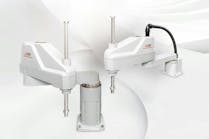LonMark International Expands Interoperability Model Across Building Industry
LonMark International has announced its support of an expanded interoperability model to deliver increased value, improved energy efficiency, and advanced capabilities to building owners and operators. Under this model, LonMark International embraces the implementation of heterogeneous systems consisting of different industry protocols or standards linked together in a single, interoperable system.
“As it currently stands, the buildings industry doesn't benefit from the multitude of standards that claim to deliver open and interoperable solutions today,” Barry Haaser, executive director of LonMark International, said. “For example, when choosing a building automation standard — whether BACnet or LonWorks — rarely do the decision makers properly understand the open and interoperable attributes of the system they are specifying. That is why LonMark International is embarking on a program to help customers understand the characteristics and benefits of truly ‘open’ systems.”
“BACnet and LonWorks are two important building protocol standards with complementary strengths which, when used together, deliver an important interoperable system from top to bottom,” Tracy Markie, chairman of LonMark International, said. “As the market continues to evolve, it is critical to create a seamless environment to deliver interoperable systems.”
Defining Interoperable Systems
To set clear expectations for end-users, standards organizations and solution providers need to include the following key criteria when defining interoperable systems:
• Compliant products certified as interoperable by a recognized authority.
• Availability of products from multiple suppliers through distribution.
• A unified installation tool capable of commissioning compliant products.
• A unified software head-end tying systems together.
• Certified people and companies capable of delivering such systems.
A variety of protocols are often used for a core building-automation system. It is not uncommon, for example, to have a system utilizing BACnet controllers at the IP-level with LonMark-certified products at the field level. This combination gives building owners and operators, consulting engineers, and system integrators access to a catalog of more than 500 certified products from which to choose. By embracing open protocols at the highest system level, building owners and specifiers can start with either a LonWorks or BACnet-based system, knowing that they can ultimately design-in a true open, interoperable, integrated system using LonMark-certified products.
Further extending the use of open protocols and technology that best suits the needs of the end-user, LonMark International traditionally recommends the use of RF technology using technology such as the EnOcean standard for simple sensors and switches for difficult-to-wire locations as well as the DALi standard for simple lighting control. Each of these protocols has direct interfaces or routers from multiple sources, which connect to a LonWorks network, creating a seamless, open, interoperable system.
“The combined advantages of LonMark and EnOcean have been proven in multiple deployments worldwide,” Cory Vanderpool, director of EnOcean Alliance in North America, said. “Pairing a wired LON system with EnOcean-enabled wireless devices results in an optimal network for building automation.”
Smart Grid Integration
According to LonMark International, smart grid integration will benefit from this heterogeneous systems approach. Buildings connected to the smart grid can benefit from granular automation, whereby controls are further distributed to individual sensors and actuators. Enhanced control strategies will allow automated changes to the building to maximize energy efficiency, while maximizing client comfort and productivity. This could be as simple as a change in a thermostat set point or dimming lights, or as complex as a scheduling change for an entire campus, based upon market price fluctuations in energy as determined by the utility. Having buildings "react" to energy pricing changes is a key application where smart buildings and the smart grid intersect – and LonMark standards have been developed in coordination with other associations to ensure that reliable and robust control strategies can be implemented.
LonMark International is a non-profit association for the certification, education and promotion of interoperability standards for control networking. LonMark International has tested and certified more than 900 compliant products since 1994. More recently, LonMark International began certifying integrators and integration companies to provide building owners and operators with a competent and knowledgeable pool of installers and integrators to deliver interoperable systems. For more information, visit www.lonmark.org.








